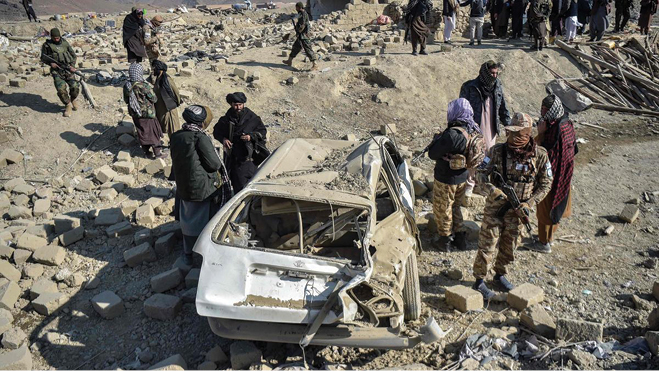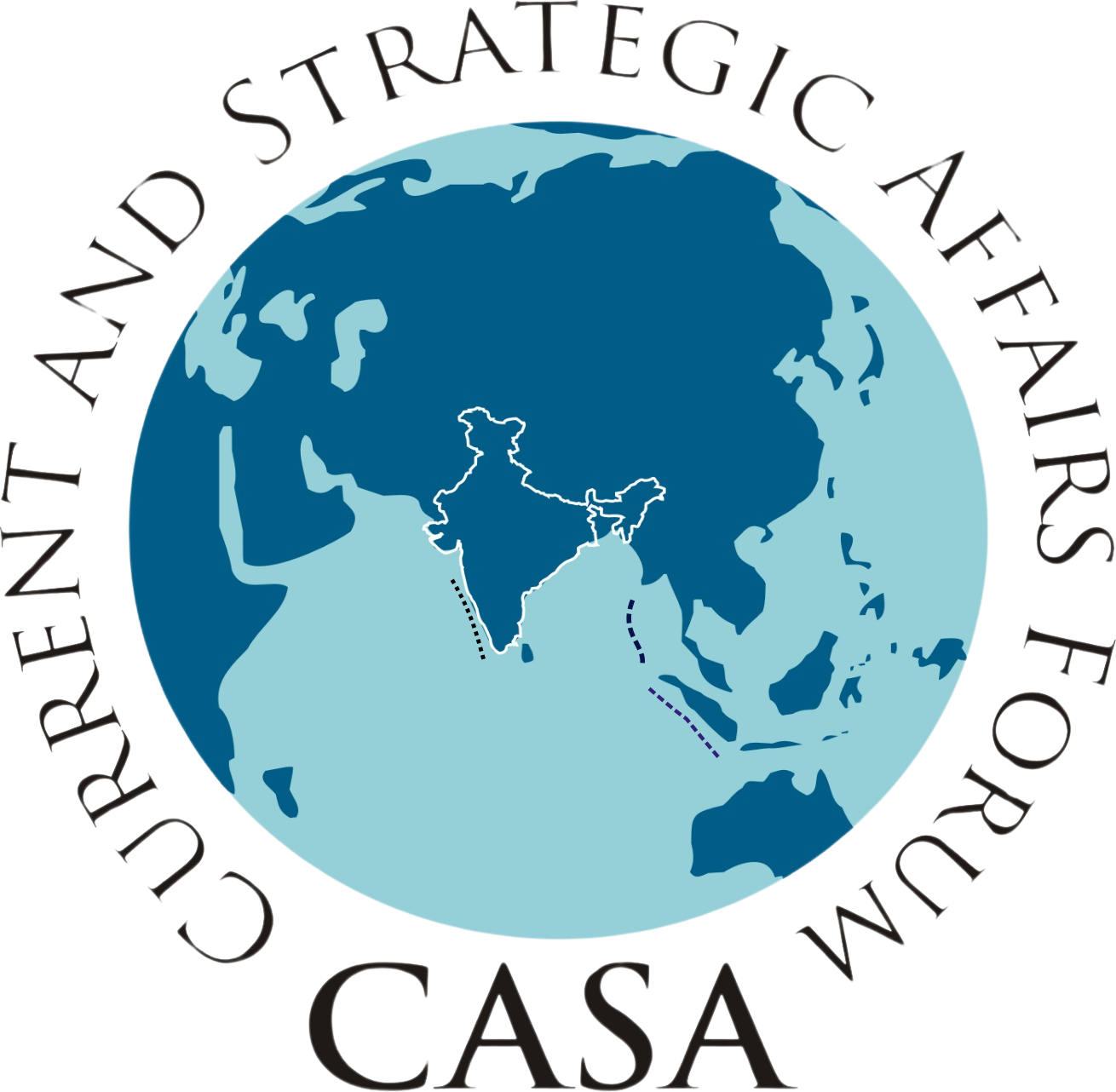Pakistan’s Self-Inflicted Crisis and Turmoil
- March 29, 2025
- Posted by: Mr Ajay Singh
- Categories: Taliban, US

Sub Title : Pakistan’s internal issues and economic problems continue to pile up
Author : Ajay Singh
It is a far cry from the heady days of September 21, when the Taliban stormed into Kabul in the wake of the US withdrawal, and took over Afghanistan. Then, Pakistani Prime Minister Imran Khan rejoiced at their victory, “which heralded a glorious future for Pakistan and Afghanistan.” The ISI chief General Faiz Hameed, flew to Kabul to sip tea with the Taliban leadership assuring them, “We are together again.” Yet, just three years down the line, Imran Khan and his ISI chief are both in jail. Pakistan and Afghanistan are virtually in a state of war, and rather than a glorious future, Pakistan seems to be staring deeper in to the abyss.
Pakistan’s misplaced concept of “strategic depth” through Afghanistan has backfired spectacularly. It was hoped that a well-disposed Taliban regime in Kabul, would rein-in their counterparts, the Tehrik-e-Taliban Pakistan(TTP) who had unleashed a reign of terror in Waziristan and the NWFP. Instead, an emboldened TTP, now bolstered to a strength of 6000 cadres – many from the Afghan Taliban and armed with sophisticated weaponry captured from the Americans, simply ran amok inside Pakistan with their avowed aim of bringing Sharia Law in the country. They rejected a government ceasefire, intensified attacks on security forces and government installations, took over entire villages, and simply fled across the non-existent Durand line after executing their attacks – often under covering fire provided by their counterparts on the other side of the line.
The attacks have been well coordinated with the actions of freedom fighters in Balochistan and Islamic fundamentalist groups all across Pakistan. As per the Institute of Peace and Conflict studies, 2024 was the worst year for Pakistan in the past decade, with 444 attacks claiming an estimated 670 security personnel and over a thousand civilians – over an attack a day. Coupled with growing political and economic unrest, it seems that things are only going to get worse.
Tensions across the ‘Hypothetical Line’
For much of the year, Afghanistan-Pakistan tensions have been on the rise. Pakistan claims that the Afghan Taliban (whom they now call TTA) do not curb the TTP, but actively assist it. They had been threatening ‘hot pursuit’ and cross-border attacks, against TTP bases across the Durand Line and were soundly warned against it. Cross border firing has increased and July also saw artillery exchanges between the two sides. Pakistan made a futile attempt to fence the border, but were forced to call off the venture by a spate of attacks by the Taliban who do not recognise the Durand Line and move with impunity on both sides of it, even claiming parts of Waziristan as “Greater Pukhtoonwa”.
But things came to a passe in December, when the TTP intensified their attacks across Waziristan. They attacked a military check post and killed 16 soldiers – an action which forced Pakistan to retaliate with an airstrike inside Afghanistan that killed 46 people – largely women and children on 21 December. Incidentally, India too condemned Pakistan’s air attack. India is re-establishing ties with the Taliban leadership with a meeting between the Foreign Secretary and the Taliban Foreign Minister, and the re-establishment of our connections with Afghanistan is another sore point with Pakistan.
The gloves are completely off now. The Taliban has declared “A 360 degree War” against Pakistan and the TTP launched a series of attacks, “On the other side of the Hypothetical Line”– the name by which the Taliban call the Durand line which they refuse to recognise. Just a week later, on 09 January, the TTP abducted18 Pakistani nuclear engineers of the Pakistan Atomic Energy Commission in the Dera Ismail Khan district, along with quantities of uranium – threatening to execute them if the army did not call off its actions against the TTP. This is a dangerous portend. It implies that Pakistan’s nuclear assets are no longer safe, and could fall into wrong hands. The looted Uranium could also be used to make a ‘dirty bomb’ at a later juncture.
Pakistan is now virtually in a state of war with the TTP and by extension, the Taliban government in Afghanistan. They have launched operation
AZM- E- ISTEHKAM (Resolve for Stability) but it seems a case of too little too late. This operation could well go the way of their earlier operations which attained local tactical victories, but at a huge cost to the local population, and then fizzled out. There is little long-term strategic foresight, or cooperation between the army and the political leadership – which in any case is preoccupied with its own political survival. And to compound the issue, the freedom struggle in Balochistan has also picked up momentum.
The Baloch Freedom Struggle
Balochistan – Pakistan‘s largest province comprises of 40% of its area, but only 6% of its population. It is also the richest in terms of natural resources, but has been repeatedly exploited and is the poorest in terms of GDP per capita. It is the resentment and subjugation of the Baloch identity that has spawned a freedom struggle going on for almost 70 years now. This struggle has just intensified.
One of the major triggers to it was the development of Gwadar port – the centrepiece of the $64 Billion Chinese CPEC that runs from Gwadar, across most of Balochistan and onto Gilgit and China. Like other projects, the perceived benefits of the port and the road did not percolate to the locals, who claimed that all they received was teas shops and puncture repair shops along the way. All the jobs and benefits were funnelled towards the ruling elite in Punjab and the Chinese, causing resentment against both. In fact, Baloch attacks have largely targeted CPEC investments, virtually bringing them to a halt.
The liberations groups like the Baloch Liberation Army(BLA), the Baloch Liberation Front(BLF), the Majeed Brigade and others have upped the ante with a range of attacks across the province. And the timing, scale and location of their strikes indicate a close coordination with the TTP. In fact, the two insurgencies seem to have merged.
2024 itself has seen 248 attacks by Baloch freedom fighters ranging across the province and into neighbouring Khyber Pakhtoonwa and Sindh as well. Over 74 people were killed in a series of targeted attacks across Balochistan, on the 18th death anniversary of Nawab Akbar Bugti – the father of the freedom struggle. Posts were attacked, highways blockaded, buses stopped and Punjabis pulled out and shot, bringing a distinct ethnic contour to the conflict. Chinese personal were specially targeted, with a suicide attack in Karachi hitting a bus carrying Chinese workers, killing 2 and injuring 10. Another convoy carrying Chinese engineers to the port was attacked by the BLA who gave the Chinese personnel the ultimatum to “withdraw within 90 days.”
These attacks have succeeded in largely scuppering the CPEC, with Xi Jinping himself expressing concern about the safety of Chinese projects and workers and even offering to send Chinese troops for their safety. Pakistan has deployed two full divisions to ensure the security of the Gwadar-Gilgit road, but are unable to prevent attacks. Traffic to and from the port has slowed to a trickle, and the heavy investments have little return to show. This has forced China to reduce the scale of future investments in CPEC-II.
In response to the latest series of attacks, Pakistan announced “comprehensive military actions” and launched a series of heavy-handed operations against the Baloch fighters. But that is like putting a Band-Aid on a fracture. It does not address the root cause of the problem and the alienation of the Baloch people after years of exploitation, random killings, and forced disappearances. The leaders of the Baloch struggle are largely well-educated youth, who provide greater clarity and direction to the battle. Their actions, coupled with that of the TTP, has pushed Pakistan to the brink.
The Political and Economic Situation
Pakistan’s western borders have erupted all the way from Baluchistan to the NWFP. And they also traded a series of rocket and missiles strikes with Iran in the early part of the year. Ironically, the most peaceful border they have now is with its implacable foe – India. But that has not stopped them from continuing to foster terrorism in Kashmir. As per Army Chief General Dwivedi, 60% of the terrorists in Kashmir still originate from Pakistan.
And internally too, they are in their usual state of chaos. Imran Khan, though in prison, still has a clout to rouse public support for a series of anti-government agitations that severely tests the military. And though the coalition government of Shahbaz Sharif still holds, it is fragile and it is the army that calls the shots from the background.
The economy is limping back, but Pakistan has been forced to go to the IMF – for a record 25th time – for a $6 billion bailout, just to service its now unsustainable debt. That may provide a respite, but with no structural changes or new investments coming in, the economy is unlikely to really get back on track.
It is difficult to feel sorry for Pakistan’s predicament. Their policies have come back to haunt them. After all you cannot harbour snakes in your backyard and hope they will only bite your neighbours. But even now, the army is strong enough to bring in some measure of control, just as they did in 2014. But it is divided from within – just as the nation is – and extremist forces have infiltrated each segment of society. It will be harder this time. Pakistan will not really disintegrate but continue limping in this manner for quite some time to come. Which may not really be too bad. Their self-created situation ensures that they will be focused on their own problems and would not be able to cause much mischief along its Indian frontier.
